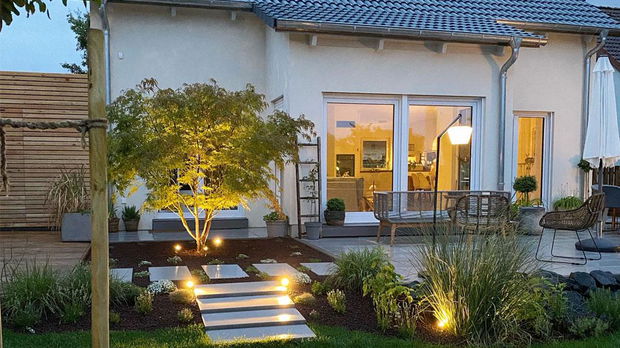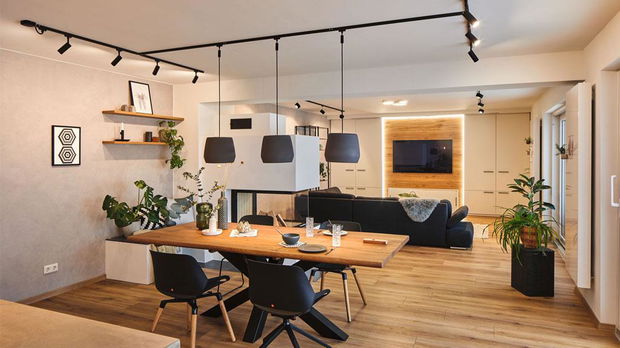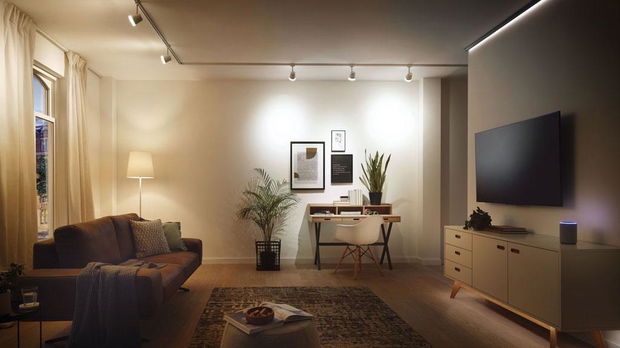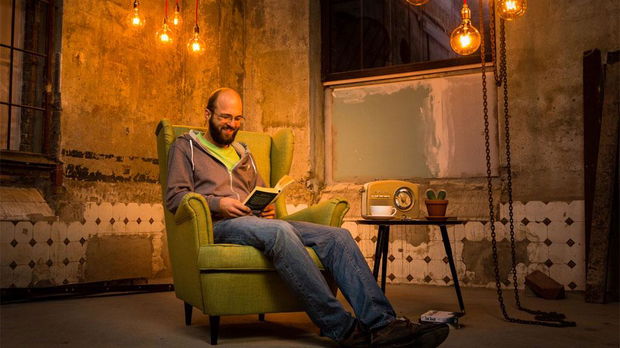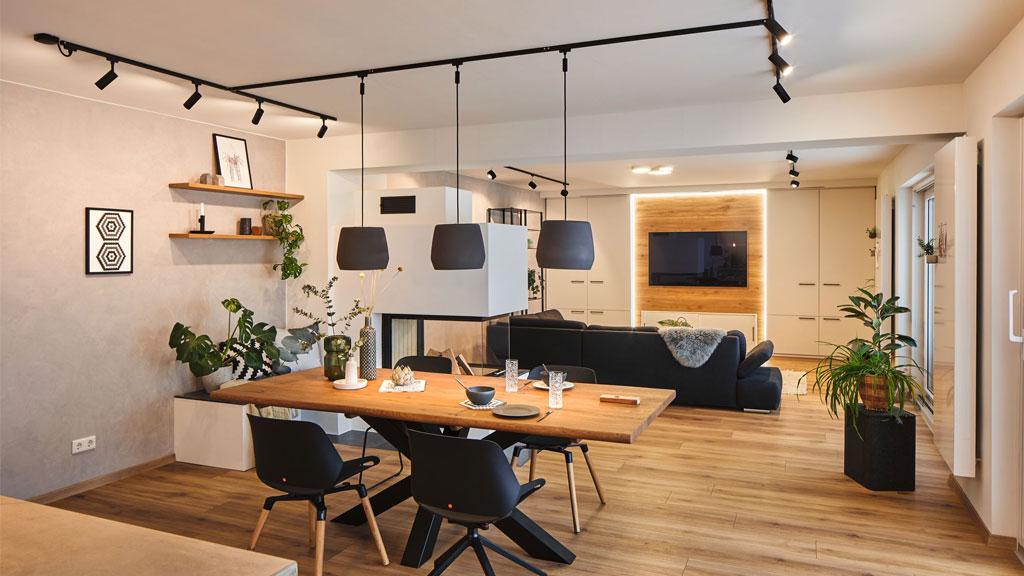1. Indoor lighting for individual rooms
Each room in your home has different light requirements. That doesn't just mean the lumen yield – there are decorative and technical aspects to think about as well.
Here we have put together some valuable tips & tricks for planning the lighting concept for each room. Select the room you want to light up.
Other factors for the overall effect of the room are the furniture and the colour of the walls. Bright furniture and walls will automatically make a room appear brighter, while darker hues will need additional illumination.
The rule of thumb for basic lighting is easy to remember:
- Living area and hallway: 100 lm/m²
- Kitchen and bathroom: 300 lm/m²
Lumen (lm) is the unit of measure for luminous flux. The lumen value states the amount of light emitted by a lamp. The term "lumen" is Latin and means "light". The amount of lumen a lamp emits is stated on the front of our packaging. The same information can also be found in the technical data of the relevant product page.
Calculating basic lighting requirements:
All you have to do is look at product specifications to find out, how many luminaires you will need for your lighting project. The light yield of each item is stated there. Here are two examples, in which we calculated the light needed for 12m² room. In one example, we chose one of our panels (Art. No. 70871) and one of our recessed luminaires (Art. No. 92585) for the other.
While one recessed luminaire has a light yield of 560 lm, one panel offers as much as 1,800 lm. These examples illustrate that you would only need one panel for that 12m², as it produces a light yield of 150 lm/m². A single recessed luminaire would only produce 46.7 lm/m² – you would need two more for adequate room illumination.
We always recommend creating additional light sources for secondary and accent lighting to round off the overall appeal of the room. These could be floor luminaires or table luminaires in the living room, mirror luminaires in the bathroom or a simple desk lamp in the home office. Learn more about the three lighting categories (basic, secondary and accent lighting) on our Light Concepts page.
3. What does the size of the room have to do with lighting?
Room characteristics and dimensions play an important part when it comes to selecting the right lighting for a room. There are "light rules" to follow, depending on room dimensions.
The focus here is on total square meters, layout and also ceiling height.
In rooms with very high ceilings, pendant lamps or cable systems installed in a suspended ceiling have a special purpose: They are not just a great light source, but also very attractive statement pieces. We also recommend using additional luminaires – for example on the wall – to create focal points in the room to draw the eye away from the high ceiling.
Key Points for Indoor Lighting
- The recommended number of luminaires varies depending on the room type and size. While the feel-good light factor for the kitchen and bathroom would be on average at around 300 lm/m², most people prefer a more gentle 100 lm/m² in the hallway or living room.
- Aside from light yield, there are some specific "light rules" to follow – more on that can be found on the pages for each room.
- Room dimensions play an important part as well: In big rooms and rooms with high ceilings, eye-catching ceiling luminaires and a variety of other light sources are always a good idea, while small rooms and those with low ceilings should have a lot less lighting installed.

